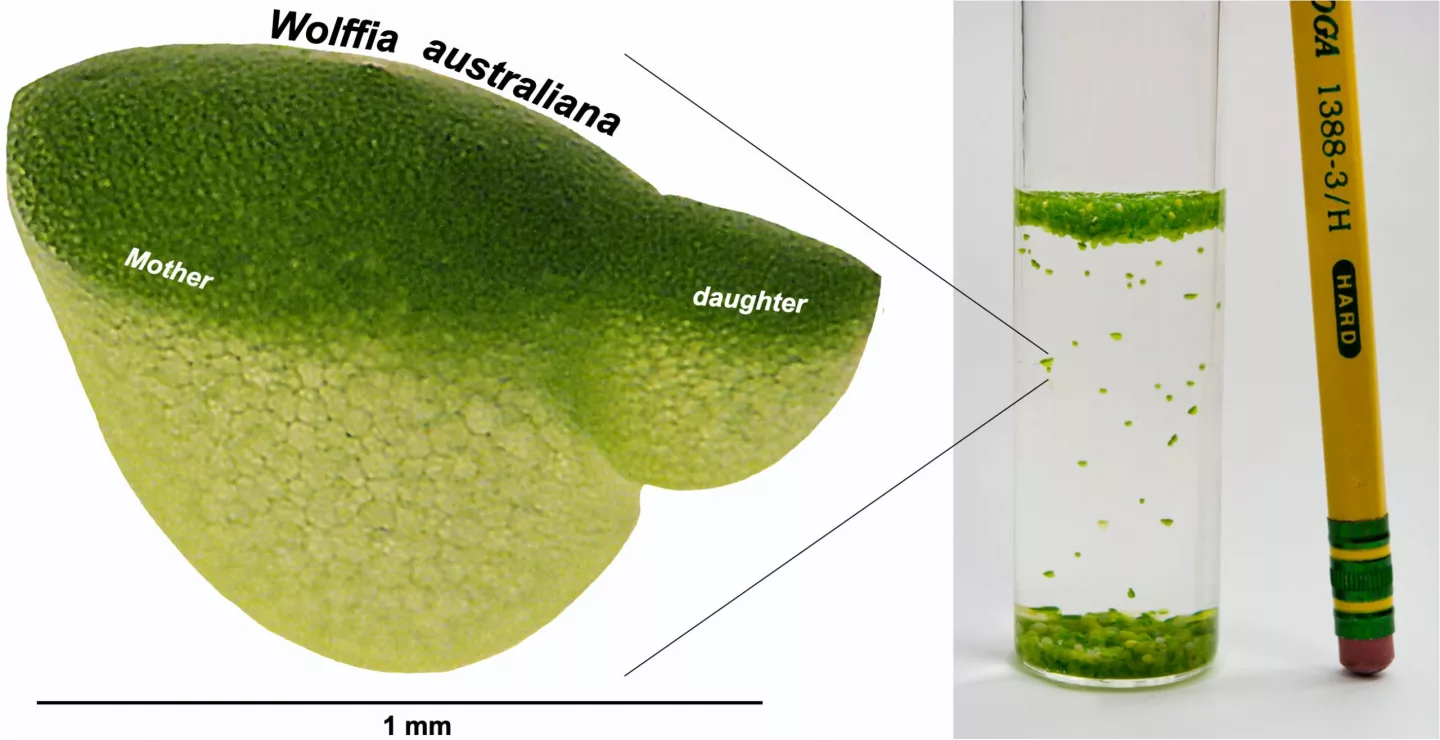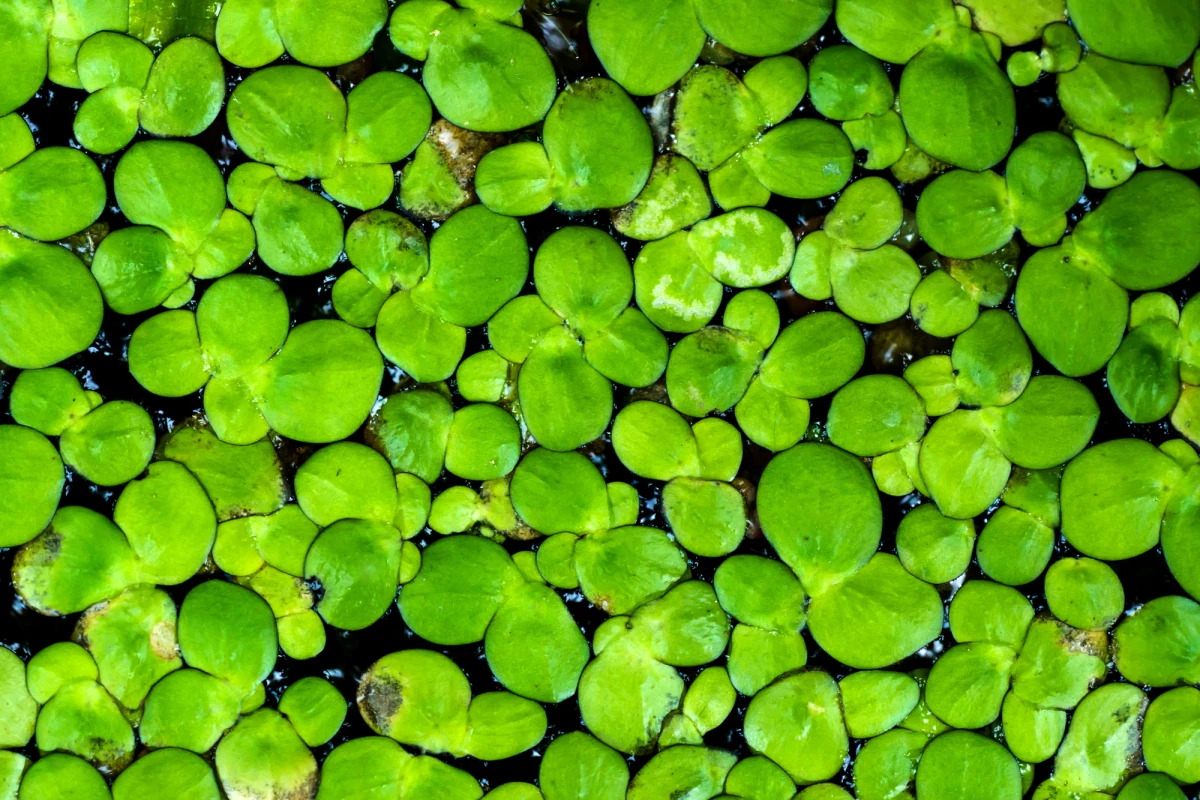Scientists at the Salk Institute's Harnessing Plants Initiative hope to tackle the issues of climate change and food security by unraveling the genomic architecture behind various plant species, and they've just gleaned some valuable lessons from the fastest-growing example we know of. By studying the genetics underling the tiny aquatic plant known as duckweed, the researchers have gained a new understanding of the way it favors its own development over other typical plant functions, which could prove useful in efforts to optimize crops for the future.
Duckweed, less commonly known as Wolffia, grows in freshwater environments all around the world and is consumed in parts of Southeast Asia. It features no roots, is made up of a single stem-leaf structure and reproduces when a daughter plant buds off from the mother. Each duckweed plant is around the size of a pinhead, and the plant is capable of doubling in size on a daily basis, which has attracted interest from scientists working in the field of food security.
But the genetic underpinnings that give Wolffia its incredible ability to grow so quickly have so far eluded those scientists. To unravel this mystery, the Salk Institute team grew Wolffia plants under light/dark cycles in the lab. As most plant growth is highly influenced by light and dark cycles, the idea was to analyze the genes of Wolffia throughout this process to figure out which ones were active at different times of the day.
“Surprisingly, Wolffia only has half the number of genes that are regulated by light/dark cycles compared to other plants,” says Todd Michael, first author of the paper. “We think this is why it grows so fast. It doesn’t have the regulations that limit when it can grow.”

Additionally, the team found that Wolffia does without some of the key attributes other plants rely on for survival. Where some species feature the genes required to develop complex root systems or defenses against pests such as spines or bristles, Wolffia gets by just fine without them.
“This plant has shed most of the genes that it doesn’t need,” Michael says. “It seems to have evolved to focus only on uncontrolled, fast growth.”
In 2019, we looked a research from the Harnessing Plants Initiative demonstrating how common plant species can be altered genetically to develop deeper root systems, something the team hopes to leverage in order to make them store more carbon. This feeds into one of the overarching aims of the research group, which is to develop next-generation plants that can be optimized for certain behaviors.
These newly unearthed findings around how this simple plant is able to grow so fast will also inform the team's efforts, offering the scientists a model with which to study certain characteristics of plant behavior and the roles played by certain genes.
“A lot of advancement in science has been made thanks to organisms that are really simple, like yeast, bacteria and worms,” says Michael. “The idea here is that we can use an absolutely minimal plant like Wolffia to understand the fundamental workings of what makes a plant a plant.”
The research was published in the journal Genome Research.
Source: Salk Institute





